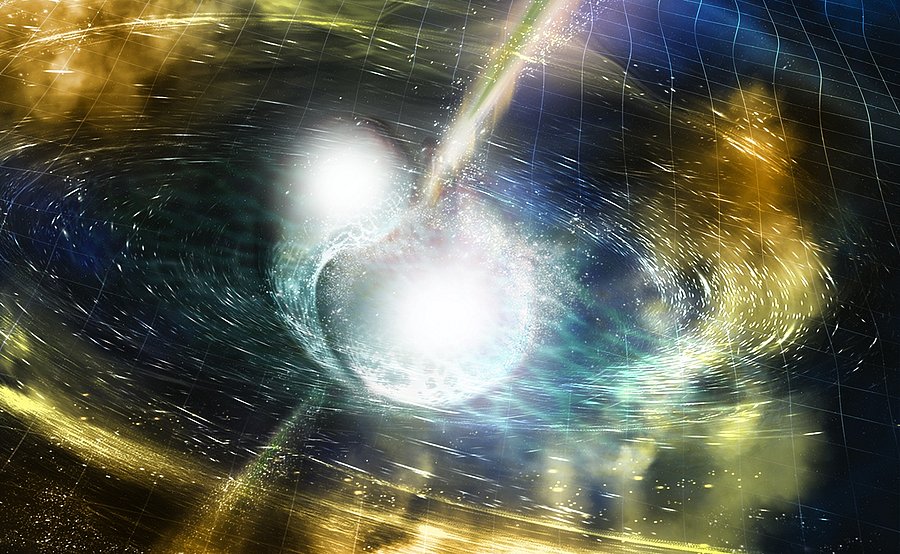Coordinating research
Astrophysics centre for multi-messenger studies in Europe launches

The ACME will focus in particular on multi-messenger astrophysics. This new science pursues the approach of recording all forms of radiation from selected astrophysical sources simultaneously and linking the data from different observatories for this purpose. One prominent example is the merger of two neutron stars observed for the first time on 17 August 2017. The image shows an illustration of such a neutron star merger. // Photo NSF/LIGO Sonoma State University
The aim of the work in Wuppertal is to prepare the observatory's data for joint observations with other large-scale research devices and to enable data exchange in near real time. "The Pierre Auger Observatory will thus be able to react automatically to observations from other large-scale devices involved and, conversely, trigger measurements at other large-scale devices, in the spirit of multi-messenger astronomy," says Rautenberg. "In addition to this first-time interconnection of large-scale devices, the working group will also be involved in the data analysis and astrophysical interpretation of the data obtained and make its expertise available to other scientists in Europe and beyond," adds Kampert.
With 40 world-class institutions from 15 countries, ACME brings together the astroparticle and astronomy communities in a joint effort to create a basis for increased long-term collaboration between these research infrastructures, regardless of their location, and to improve access opportunities across Europe and beyond. The project, funded by the European Union with a total of 14.5 million euros, is coordinated by Prof Antoine Kouchner (CNRS/Université Paris Cité) and co-coordinator Paolo D'Avanzo (INAF, Italy).
Multi-Messenger Astronomy
Multi-messenger astronomy pursues the approach of recording all forms of radiation from selected astrophysical sources simultaneously and linking the data from different observatories for this purpose. One prominent example is the merger of two neutron stars observed for the first time on 17 August 2017. This event was detected both via the emitted gravitational waves (Nobel Prize in Physics 2017) and via the emitted gamma, optical and radio radiation.
This combination provided completely new insights into the (astro)physical processes shortly before, during and after the merger, such as the internal properties of neutron stars and the formation of heavy elements. With the participation of the Wuppertal working group, it was also possible to set important upper limits on the emission of high-energy neutrinos and photons and thus better understand the formation of the subsequent astrophysical jets.
Pierre Auger Observatory
The Earth is exposed to a constant rain of high-energy particles from space. However, it is not clear exactly where they come from. An international team of researchers led by Nobel Prize winner James Cronin and with the participation of the University of Wuppertal set out to solve this - one of the biggest and oldest questions in astrophysics. On this occasion, the Pierre Auger Observatory for the observation of cosmic rays was established 25 years ago in the Argentinian Pampa Amarilla plateau.
The observatory covers an area of 3,000 square kilometres. This makes it the world's largest observatory for high-energy particle beams from the universe. For seven years - from 2010 to 2017 - it was under the management of the University of Wuppertal. Prof Dr Karl-Heinz Kampert is a co-founder and former spokesperson for the observatory and is still the project manager for the University of Wuppertal.

